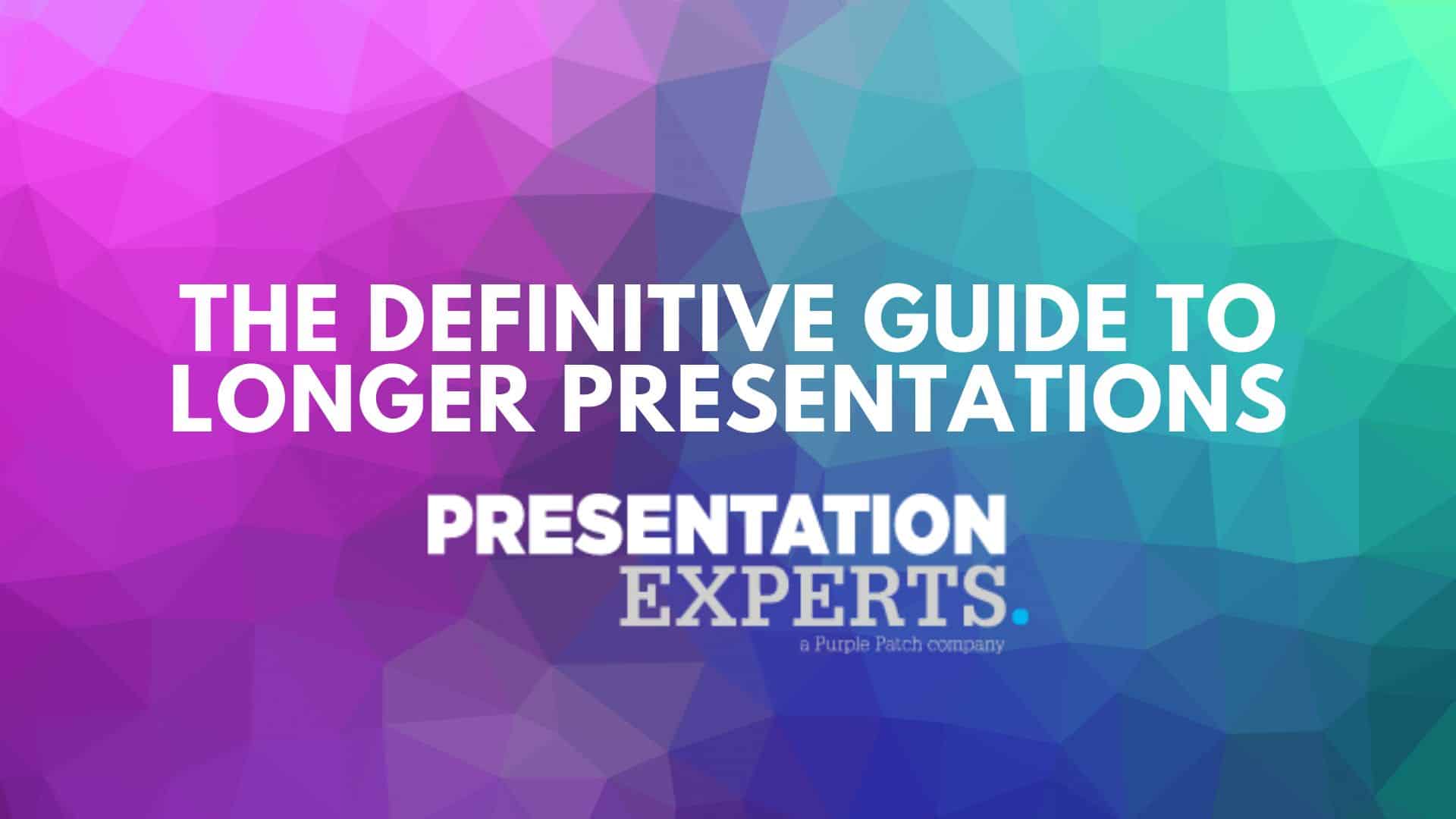

In many situations, short and succinct presentations are the norm. A five-minute pitch, a 15-minute conference talk, or a brief classroom lecture can be incredibly effective. However, there are times when a longer presentation is not just beneficial but necessary. This can be the case when you have a complex topic to cover, a multifaceted message to convey, or an audience that expects a deep dive into your subject matter.
With that being said, longer presentations can lead to audience fatigue. When audience members become disengaged, they may lose interest and stop paying attention to your content.
So, can we extend a presentation while also ensuring audience engagement? How do we design presentations that are not just highly informative but also captivating? If you were wondering the same, you have come to the right page! Whether you’re a business professional, an educator, a public speaker, or someone who simply wants to share their ideas effectively through long-form presentations, you will find the tips and advice shared in this article useful in making your presentations longer without losing your audience’s attention.
But before we dive in, let’s first identify the scenarios in which a longer presentation is justified and also look at some common pitfalls of longer presentations (and ways to avoid them).
When is a Long Presentation Justified?
Extended presentations are valuable when you need to provide in-depth analysis, offer comprehensive solutions, or explore a multifaceted issue. In fact, a longer presentation is very much warranted in situations where the subject matter, audience, or goals demand a more in-depth and comprehensive exploration. With the help of such presentations, you can engage with your audience on a deeper level, providing a rich learning experience and enabling a thorough examination of your ideas.
Here are some common situations where a longer presentation is justified:
Complex Topics: When dealing with complex, multifaceted subjects that require thorough explanations, a longer presentation allows you to delve into the details, provide context, and ensure the audience gains a comprehensive understanding.
In-Depth Training: Training sessions, workshops, or educational seminars often require longer presentations to cover the curriculum extensively. This is especially true for technical or skill-based training programs.
Research and Analysis: Presentations based on extensive research or data analysis often need more time to present findings, methodology, and implications comprehensively.
Strategic Planning: Longer presentations are essential in corporate or organisational settings when discussing strategic plans, objectives, and business strategies. They require detailed explanations and discussions.
Policy and Legislative Matters: Government or policy-related presentations often require longer durations to discuss proposed legislation, regulations, or policy changes in detail, as well as address questions from stakeholders.
Innovation and New Technologies: Presentations on cutting-edge technologies or innovative solutions may demand additional time for explaining intricacies, applications, and potential disruptions.
Scientific and Academic Conferences: Longer presentations are common in scientific and academic conferences, where researchers and scholars present their findings and discuss them with peers.
Public Health and Safety: Information related to public health, safety, or emergency procedures necessitates longer presentations to ensure clarity and compliance with guidelines.
Comprehensive Marketing and Sales: Sales and marketing presentations for complex products or services may require a longer duration to address features, benefits, and customer questions.
Community Engagement: Presentations involving community issues, development projects, or local initiatives often require more time for public engagement and thorough discussions
Historical and Cultural Topics: Presentations about historical events, cultural practices, or traditions may demand a longer duration to provide background, context, and in-depth exploration.
In-Depth Workshops and Seminars: Workshops and seminars focused on skill development, personal growth, or leadership often require more time to provide hands-on experiences and interactive learning.
Government and Policy Briefings: Government officials often need longer presentations to brief stakeholders, agencies, or the public on policy proposals, legislative changes, or key government initiatives.
Strategic Decision-Making: Longer presentations are essential for board meetings, executive presentations, and decision-making discussions where strategic choices and their implications are under consideration.
Product Launches and Demonstrations: Product launches or demonstrations may need longer presentations to showcase features, benefits, and usage scenarios, as well as to answer questions from potential customers.
Educational Institutions: In academic settings, lectures, thesis defences, or educational sessions may require extended presentations to ensure a comprehensive transfer of knowledge.
Public Awareness and Advocacy: Presentations related to social issues, advocacy, and public awareness campaigns often need longer durations to effectively communicate the importance of the cause and potential actions.
Policy Debates: In debates related to policy or controversial topics, longer presentations allow for more thorough arguments and counterarguments.
Crisis Management and Response: Longer presentations are necessary for crisis response plans, as they require detailed explanations, response protocols, and communication strategies.
Market Research and Analysis: Business presentations that focus on market research, consumer behaviour, or industry analysis may require additional time to cover data, insights, and strategic implications in depth.
In these situations, a longer presentation ensures that the audience receives a comprehensive and well-rounded understanding of the subject matter, making it a necessary choice for effective communication and engagement.
What Are The Common Pitfalls of Longer Presentations?
While longer presentations can be valuable in certain situations, they also come with common pitfalls that presenters should be aware of and work to avoid. Some of these pitfalls include:
Loss of Audience Engagement: Longer presentations can lead to audience fatigue. When audience members become disengaged, they may lose interest and stop paying attention to your content.
Information Overload: Presenters risk overwhelming their audience with excessive information. Too much data or content can make it difficult for the audience to absorb and retain key points.
Lack of Clarity: Extended presentations can suffer from a lack of clarity if the presenter doesn’t structure the content well or if they go off on tangents. This can confuse the audience and dilute the message
Ineffective Time Management: Managing time in longer presentations is crucial. If a presenter doesn’t allocate enough time to different sections or overruns, the presentation can feel rushed at the end, leaving the audience with unanswered questions.
Loss of Focus: Longer presentations might lose focus as the presenter tries to cover too many subtopics. This can dilute the main message and make it challenging for the audience to identify key takeaways.
Audience Fatigue: As presentations extend beyond a certain duration, audience fatigue sets in. The longer the presentation, the more likely it is that audience members will start to lose interest and become restless
Decreased Retention: Longer presentations can lead to decreased information retention. The human brain has limits to how much information it can absorb and remember in a single sitting, so extended presentations may result in lower retention rates.
Repetition: To fill time in a longer presentation, presenters may inadvertently repeat points, which can frustrate the audience and diminish the overall quality of the presentation.
Ineffective Visuals: When presenters use visuals, such as slides, they must ensure that these visuals are engaging and relevant. In longer presentations, there’s a risk of using too many or poorly designed visuals, which can hinder understanding and engagement.
Inadequate Interaction: Longer presentations may lack audience interaction, which can lead to reduced engagement. Failing to involve the audience through questions, discussions, or activities can make the presentation feel like a one-way lecture.
Overloading with Data: When dealing with data-heavy content, it’s vital to present the data effectively. Longer presentations run the risk of inundating the audience with data without clear explanations or insights.
Complex Language and Jargon: Presenters might use complex language or industry-specific jargon in longer presentations, which can alienate or confuse the audience, especially if they are not experts in the subject matter.
Poor Storytelling: In a longer presentation, storytelling is still essential. If the presenter fails to incorporate relevant stories or anecdotes effectively, the content can become dry and uninspiring.
Lack of a Clear Roadmap: Longer presentations need a clear structure and roadmap. If the presenter fails to provide a sense of direction and organisation, the audience may feel lost.
Ineffective Visual Design: Longer presentations often rely on visuals for support. If these visuals are poorly designed or cluttered, they can detract from the presentation’s effectiveness.
Failure to Address Questions: In longer presentations, there may be time for audience questions. Failing to address questions effectively or dismissing them can lead to audience dissatisfaction.
Overestimating the Audience’s Attention Span: Presenters should be cautious not to overestimate the audience’s attention span. Even in longer presentations, breaks, interactive elements, or format changes are necessary to keep the audience engaged.
Lack of Adaptation: A longer presentation may necessitate adjustments based on the audience’s reactions and needs. Presenters should be prepared to adapt the content on the fly to maintain audience interest and engagement.
To avoid these common pitfalls, it’s essential to plan longer presentations meticulously, keeping the audience’s needs, attention span, and overall goals of the presentation in mind. Now that you are aware of the common mistakes most presenters make with longer presentations, let’s have a look at some of the best ways to avoid them.
Important Things to Keep in Mind When Creating Longer Presentations
Creating longer presentations requires careful planning and execution to ensure that your message remains engaging and effective throughout the extended duration. Here are important things to keep in mind when crafting longer presentations:
Understand Your Audience: Know your audience’s expectations, interests, and prior knowledge. Tailor your content to meet their needs and level of expertise.
Define Clear Objectives: Clearly articulate the goals and objectives of your presentation. What do you want to achieve, inform, or persuade your audience about?
Structure Your Content: Organise your presentation with a clear beginning, middle, and end. Create a logical flow that guides the audience through the content.
Use a Strong Opening: Start with an attention-grabbing introduction. Engage the audience from the beginning with a compelling story, a thought-provoking question, or a surprising fact
Focus on Key Messages: Identify the core messages you want to convey and keep them at the forefront throughout the presentation. Avoid going off on tangents.
Engage with Stories and Examples: Incorporate real-life stories, examples, and anecdotes to illustrate your points and make the content relatable.
Interactive Elements: Include interactive elements like questions, polls, group discussions, and activities to keep the audience engaged and participating.
Visual Aids: Use well-designed slides and visuals to complement your message. Visuals should enhance understanding, not overwhelm with information.
Practice and Rehearse: Practice your presentation multiple times to ensure a smooth and confident delivery. This also helps you manage time effectively
Time Management: Allocate appropriate time to each section and stick to your schedule. Be prepared to adjust if you notice you’re running behind or ahead of schedule
Clarity and Simplicity: Use clear and concise language. Avoid jargon or overly technical terms that might confuse your audience.
Transitions: Pay attention to smooth transitions between different sections of your presentation. Use transitional phrases to guide the audience
Audience Engagement: Continually assess the audience’s engagement levels. Adjust your delivery or content if you sense the audience is disengaging.
Incorporate Variety: Change the pace, tone, and style of your presentation to maintain interest. Break up monotonous segments with stories, questions, or multimedia.
Use Multimedia Wisely: Integrate multimedia (videos, images, and audio) when it enhances your message, but avoid overloading the presentation with too many elements.
Reinforce Key Points: Periodically summarise key points to reinforce the main message. This helps the audience remember the core takeaways.
Anticipate Questions: Prepare for common questions the audience might have and address them proactively in your presentation.
Feedback and Adaptation: Be open to feedback during the presentation. Adjust your approach based on the audience’s reactions and questions.
Confidence and Passion: Project confidence and enthusiasm about your topic. Your enthusiasm can be contagious and keep the audience engaged.
Effective Closure: End your presentation with a strong conclusion that summarises the main points and leaves a lasting impression on the audience.
Provide Additional Resources: Offer handouts, links, or references for those interested in diving deeper into the topic.
Continuous Learning: Reflect on each presentation and seek feedback to improve your skills for future presentations.
Remember that longer presentations require more attention to detail, but with proper planning and a focus on audience engagement, you can make them both informative and captivating. Adapt your approach to the specific needs and preferences of your audience while ensuring that your key message remains central throughout the presentation.
Now that we know when it’s best to create a long-form presentation, the challenges that may arise when you create such a presentation and how to best avoid such challenges, let’s have a look at the various ways you can make your presentation longer.
How to Make Your Presentation Longer?
If you need to make your presentation longer while keeping it engaging and informative, consider these strategies:
Expand on Key Points
To make your presentation longer, you can delve deeper into your key points or main arguments. This involves providing more comprehensive information, examples, and evidence for each point. Use specific case studies, anecdotes, or research findings to illustrate and support your main ideas. Take the time to explain the intricacies and nuances of each key point, helping your audience gain a more profound understanding of the subject matter.
Incorporate Case Studies
Case studies offer a practical and in-depth view of how your topic relates to the real world. By including well-researched and relevant case studies, you can extend your presentation and demonstrate the practical applications of your ideas. Analyse these cases thoroughly, highlighting the challenges, solutions, and outcomes to provide a richer context for your audience.
Introduce Expert Opinions
To add depth and authority to your presentation, incorporate expert opinions. Quote well-known experts, researchers, or thought leaders in your field who have expressed viewpoints related to your topic. This lends credibility to your presentation and allows you to explore different perspectives and approaches.
Present Counterarguments
Expanding on counterarguments or alternative viewpoints involves providing a detailed exploration of these opposing perspectives. Explain the reasons behind these counterarguments and offer a well-reasoned response. By engaging in a thorough discussion of counterarguments, you encourage critical thinking and offer a more comprehensive understanding of the topic.
Use More Visuals
Visuals, such as charts, graphs, images, and diagrams, can help convey complex information more effectively. You can extend your presentation by including additional visuals that provide a deeper insight into your subject. Ensure that each visual is carefully chosen and directly supports the content you’re presenting.
Explore Subtopics
Breaking down your main topic into subtopics is an excellent way to extend your presentation. Each subtopic can be explored in depth, allowing you to provide a comprehensive overview of the subject matter. By dedicating a portion of your presentation to each subtopic, you can ensure that the audience gains a thorough understanding of the entire topic.
Tell More Stories
Storytelling is a powerful tool for engagement. By sharing more stories, anecdotes, and examples, you can make your presentation longer while keeping it relatable and memorable. Personal stories or stories related to your topic can effectively illustrate your main points and connect with your audience on an emotional level.
Engage in Deeper Analysis
To extend your presentation, engage in a deeper analysis of your data, trends, or implications. Dive into the details, examine patterns, and consider the implications of the information you’re presenting. A thorough analysis can help your audience grasp the complexities and nuances of your subject.
Incorporate Audience Interaction
Engage your audience by incorporating interactive elements. Encourage questions, discussions, and participation to make your presentation longer while involving the audience. Interactive sessions allow the audience to apply the knowledge you’ve shared and can lead to deeper exploration of the topic.
Use Audience Polls
Incorporating audience polls or surveys can extend your presentation while actively involving the audience. Pose questions related to your topic and allow the audience to participate. Share the poll results and discuss the implications to encourage deeper exploration.
Utilise Extended Q&A Sessions
Dedicate more time to answering audience questions to make your presentation longer. Encourage an extended Q&A session to explore topics in greater depth. Engaging in open dialogues with the audience can lead to insightful discussions.
Include Expert Interviews
If possible, conduct or include interviews with experts in your field. Expert interviews offer a unique and valuable perspective, adding depth and credibility to your presentation. These insights can provide a more comprehensive understanding of the topic, making your presentation more informative.
Explore Different Perspectives
Extend your presentation by presenting various perspectives on the topic. By discussing contrasting viewpoints and different angles, you provide a more comprehensive view of the subject matter. Encourage critical thinking and analysis among your audience
Create More Examples
Generate additional examples, scenarios, and use cases that illustrate the practical applications of your ideas. Providing multiple instances where your concepts are applied can help the audience connect theory to practice and make your presentation more thorough.
Reinforce Key Point
Periodically reinforce your key points throughout the presentation. Summarise important takeaways and revisit the main message to ensure that the audience retains the core concepts. Repetition can help reinforce understanding.
Engage in Group Activities
Incorporate group activities or discussions that require audience participation. These activities can be used to delve deeper into specific aspects of your presentation. Encourage group discussions or problem-solving exercises to make your content more interactive and extensive.
Discuss Current Events
Incorporating current events and news into your presentation keeps the content relevant and relatable to the audience. To expand on this, discuss the context and significance of these current events as they relate to your topic. Consider how recent developments have influenced the subject matter, and explore potential future impacts. This not only prolongs the presentation but also highlights the real-time relevance of the subject, making it more engaging and informative.
Collaborate with Guest Speakers
Collaborating with guest speakers or experts can enhance your presentation by offering diverse perspectives and insights. To extend this collaboration, encourage an in-depth discussion with these guest speakers, allowing them to share their experiences and expertise. By doing so, you create a more interactive and informative presentation with a broader range of viewpoints.
Connect with Personal Experiences
Sharing personal experiences related to the topic adds authenticity and depth to your presentation. Expanding on these personal insights can involve a deeper exploration of the challenges faced, lessons learned, and the practical implications of your experiences. By offering a more comprehensive look at your personal journey, you connect with the audience on a deeper level.
Visualise Future Possibilities
Extending your presentation by visualising future possibilities or potential scenarios adds a forward-looking dimension to your content. Provide detailed discussions of the various paths and choices that could shape the future of your topic. Explore the long-term implications of these choices and highlight potential opportunities and challenges. By offering a more comprehensive exploration of future possibilities, you enable the audience to envision the subject’s future evolution.
Address Common Misconceptions
Identifying and addressing common misconceptions related to your topic involves providing detailed explanations that debunk these myths. Explain the origins of these misconceptions, clarify the correct information, and offer a well-informed response to these misconceptions. By providing a comprehensive exploration of common misconceptions, you ensure the audience gains a deeper and more accurate understanding of the subject matter.
Engage in Panel Discussions
Organising panel discussions with multiple experts or stakeholders offers diverse perspectives and insights. Expanding on panel discussions can involve facilitating in-depth conversations, allowing panellists to share their experiences and engage in meaningful debates. By offering a more comprehensive panel discussion, you create an interactive and informative presentation with a wide range of viewpoints.
Use Demonstrations
Incorporating live demonstrations or simulations into your presentation engages the audience in a hands-on learning experience. Expanding on demonstrations involves offering a detailed walkthrough of the demonstration, explaining the steps and intricacies involved. By providing a deeper exploration of the practical application of your ideas, you make your content more tangible and actionable, ensuring the audience gains a thorough understanding.
Final Thoughts
By using the tips and advice shared in this article, you can create longer presentations that inform, inspire, and captivate your audience, whilst also avoiding the common pitfalls that most presenters face when it comes to delivering extended presentations.
However, if you’re inspired to work with experts in crafting your upcoming presentation and preparing for it in the best way possible, look no further. At Presentation Experts, we specialise in not just presentation design, but also presentation skills development. Whether you’re seeking support in crafting a compelling presentation, refining your storytelling techniques, or acquiring the skills to keep your audience captivated during extended presentations, we’ve got you covered.
To learn more about our services, contact us today!








